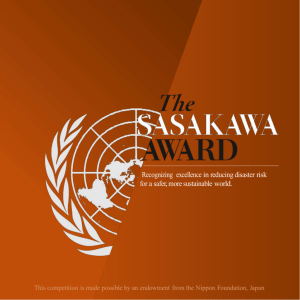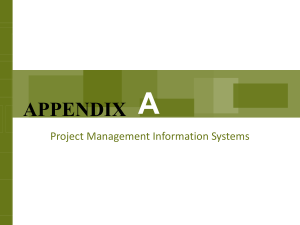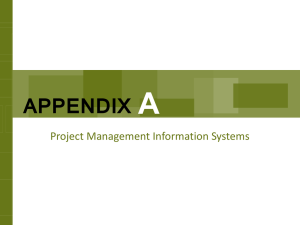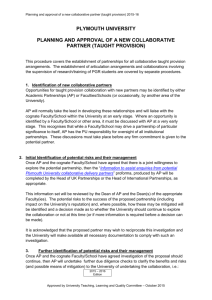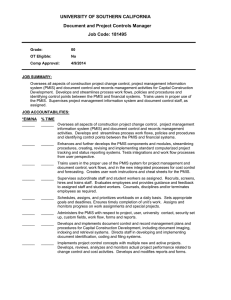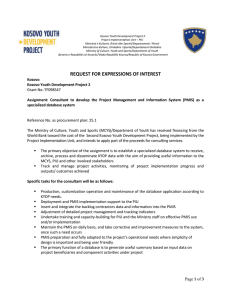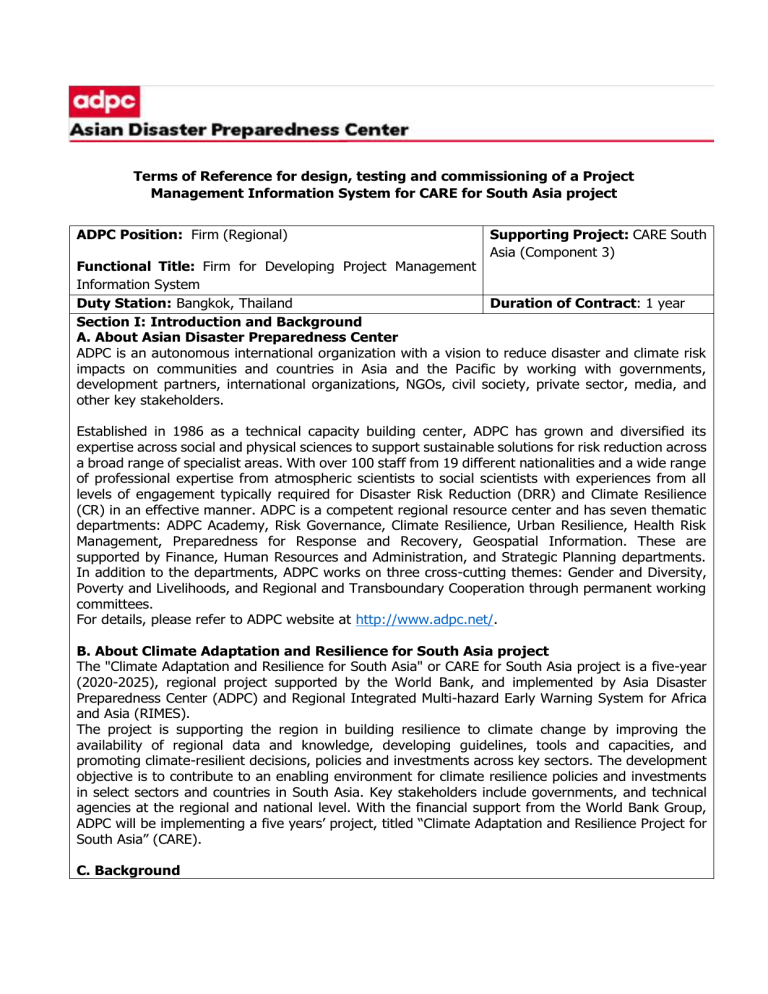
Terms of Reference for design, testing and commissioning of a Project Management Information System for CARE for South Asia project ADPC Position: Firm (Regional) Supporting Project: CARE South Asia (Component 3) Functional Title: Firm for Developing Project Management Information System Duty Station: Bangkok, Thailand Duration of Contract: 1 year Section I: Introduction and Background A. About Asian Disaster Preparedness Center ADPC is an autonomous international organization with a vision to reduce disaster and climate risk impacts on communities and countries in Asia and the Pacific by working with governments, development partners, international organizations, NGOs, civil society, private sector, media, and other key stakeholders. Established in 1986 as a technical capacity building center, ADPC has grown and diversified its expertise across social and physical sciences to support sustainable solutions for risk reduction across a broad range of specialist areas. With over 100 staff from 19 different nationalities and a wide range of professional expertise from atmospheric scientists to social scientists with experiences from all levels of engagement typically required for Disaster Risk Reduction (DRR) and Climate Resilience (CR) in an effective manner. ADPC is a competent regional resource center and has seven thematic departments: ADPC Academy, Risk Governance, Climate Resilience, Urban Resilience, Health Risk Management, Preparedness for Response and Recovery, Geospatial Information. These are supported by Finance, Human Resources and Administration, and Strategic Planning departments. In addition to the departments, ADPC works on three cross-cutting themes: Gender and Diversity, Poverty and Livelihoods, and Regional and Transboundary Cooperation through permanent working committees. For details, please refer to ADPC website at http://www.adpc.net/. B. About Climate Adaptation and Resilience for South Asia project The "Climate Adaptation and Resilience for South Asia" or CARE for South Asia project is a five-year (2020-2025), regional project supported by the World Bank, and implemented by Asia Disaster Preparedness Center (ADPC) and Regional Integrated Multi-hazard Early Warning System for Africa and Asia (RIMES). The project is supporting the region in building resilience to climate change by improving the availability of regional data and knowledge, developing guidelines, tools and capacities, and promoting climate-resilient decisions, policies and investments across key sectors. The development objective is to contribute to an enabling environment for climate resilience policies and investments in select sectors and countries in South Asia. Key stakeholders include governments, and technical agencies at the regional and national level. With the financial support from the World Bank Group, ADPC will be implementing a five years’ project, titled “Climate Adaptation and Resilience Project for South Asia” (CARE). C. Background To increase resilience and achieve climate commitments, there is a need for a transformational shift towards policies and institutions that enable climate resilient investments. Investing in more resilient infrastructure is both profitable and urgent as disruptions are extremely costly for governments, households and private sector and large ongoing investments in infrastructure assets will have longlasting repercussions as poor maintenance and natural disasters result in a vulnerable stock. At ADPC and under the CARE for South Asia project, the existing processes are largely manual, tedious and time consuming in terms of generating and using the information for decision-making. While most of the activity and project data is stored in the activity database, more information on financial and human resources, amongst others, is stored in other systems which are not linked, and readily available. This has resulted in difficulties of accessing the necessary data and information, processing and analysis, comparing performance, as well as responding adequately, and timely to the information needs of donor and other key stakeholders. The primary means of gathering data and information is through weekly, monthly, quarterly, and annual reports, providing both quantitative and qualitative data, from national, as well as from the regional staff/networks. Reports are supported by evidence of results reported in multiple document formats. Bulk of documents are shared and filed for wider sharing electronically per reporting period, and it is anticipated that this volume will increase in the coming years. Skills and competencies of CARE/ADPC staff are fairly adequate, but require further training and technical support, especially as ADPC seeks to adopt a robust and automated Project Management Information system (PMIS) tailored to the needs and priorities of the project. Given the size and the components of the project, performance tracking assumes a critical role in the management of the project. However, it would be practically challenging if not impossible to track and maintain the performance related information from different project units manually. Therefore, the ADPC needs to procure the services of a competent and professional agency to establish a functional PMIS to facilitate implementation of the CARE for South Asia Project and facilitate in performance tracking on a continuous basis. Section II. Objective and Scope of Work of the Assignment A. Objective The main objective of this consultancy is to assess the existing setup, which includes a review of the current processes in place, submit a comprehensive design brief consisting of PMIS architecture (process mapping, proposed software and hardware solutions, human resource capacity building, user manuals and any other related ancillary scope), scope and extent of the system, specifications as well as detailed costing and proposal for the supervision of the installation, commissioning and user acceptance testing, amongst others, for the successful Implementation of a PMIS for ADPC. The specific objectives of the consultancy service are to: 1. Define requirements for an integrated online (web-based) PMIS accessible to different stakeholders across and with varying levels of access, to enhance the ability of ADPC to manage the project and monitor results periodically; 2. Design and develop the system as a common tool for reporting and assessing performance and development results; 3. Install, test and commission the PMIS and performance of the User Acceptance Test (UAT); 4. Develop an operation and user-maintenance manual and train the staff of ADPC. The online system will be designed to support CARE for South Asia project monitoring, evaluation, learning and information sharing based on the Results Framework. The online system must allow for quantitative and qualitative data entry provisions in English language at the national and regional levels. The system must also facilitate data analysis and generation of reports as per the needs of the project. The system will be designed to facilitate user’s interaction by requiring minimal human work, more computer work and allows integration with current or upcoming systems. The system should be designed with security embedded at different levels by authenticating users, data validation to prevent inaccurate data entry, and also generation of required reports. In addition, audit trail failure to inform who and when a data was created or modified should be implemented. The firm needs to work closely with Project Director, the Project Implementation Unit, and the Human Resources and Finance departments of ADPC to work towards the following: B. Scope of work The scope of works is as follows: 1. Consultation with Project Director, the Project Implementation Unit, and the Human Resources and Finance departments of ADPC to understand all the key activities and deliverables to implement the PMIS. 2. Assess the current processes at ADPC and make recommendations, on how a comprehensive, efficient and cost-effective PMIS can be implemented. 3. Evaluate and recommend latest technology and standards to adopt for IT equipment and infrastructure of the PMIS to ensure reliability, interoperability and scalability in the long term. 4. Assess the current staffing capacity to operate the proposed PMIS at ADPC and recommend whether additional staff is required. The consultant is also expected to provide a training plan for the current staff. 5. Provide cost estimates and time frame for the implementation of the PMIS using different technologies like Cloud Computing, Sharepoint, Open Source similar to Drupal etc. Annual maintenance costs for the proposed technology should also be provided. 6. Develop and present a prototype model for the new system and supporting IT infrastructure. 7. Procurement of all hardware, software and ancillary applications and installation and creation of an integrated online PMIS. 8. The firm shall submit to the Project Director weekly progress reports as well as a final commissioning report, which will be the basis for payment under this phase. 9. Installation, testing and commissioning of the PMIS and performance of the User Acceptance Test (UAT). 10. Provision of training/capacity building to staff of ADPC on use of the PMIS. This will include firstly an operation and maintenance manual for the PMIS and secondly, a training plan as well as in-house workshops/ training sessions for ADPC staff. The final report on training will include both the training plan as well as contents of the in-house workshops/training sessions. Section III. Requirements Matrix The PMIS shall comprise, but not limited to, the following requirements, to be implemented as part of the PMIS. S #. Technical Description 1 Platform & Framework 1.1 Flexible and user-friendly interface 1.2 Compatible with all popular browsers 1.3 Compatible with the computer specifications and operating systems for the client end users 1.4 Developed using transformative technology for access on phones and tablets 1.5 Interconnection capability with other MIS’s 1.6 Data retrieval/exchange capability with other structures/systems and databases 1.7 Enhance password protection features 1.8 Support user account activation and deactivation 1.9 Independent login security system 1.10 Support multiple level of approval 1.11 Support web portal and Graphical user Interface (GUI) 1.12 Support of Internet Explorer and other browsers 1.13 Supports 30 users logged at the same time 1.14 Office 2016/Office365compatible. 1.15 Supports at least 5-year period of storage of data 1.16 Role-based user dashboards that cumulate data, for easy-to-use data visualization and highlighting projects and tasks that require attentions 1.17 Appropriate security arrangements (e.g. for data backup and security, access levels, etc.). 1.18 Creation of users with different rights or privileges. 1.19 Built-in backup and restore 1.20 Accessible to users as controlled and configured by the system admin. 1.21 Audit trail of all transactions and logon attempts and track validation failures 1.22 Documents uploading (photos, videos, files) 1.23 Present the information in a variety of ways depending on the preference of the person accessing data. An example would be that a person in regional office could aggregate the primary data entered by national office and displayed as reports and graphs for use at the regional level. 1.24 The proposed solution should be scalable and open for current or futuristic integrations by providing a full API’s and web services between all layers. 2 Dashboard(s) 2.1 The system should have the capability of custom dashboard for each user based on their profile i.e. Donor Dashboard, Management Dashboard, Project Director Dashboard, M&E Manager Dashboard, etc. 2.2 The dashboard should display summary pages showing data from all available sources, aggregate statistics and summary visuals which illuminate what is and is not working 2.3 Showing progress towards Project Development Objective, components, sector wise, as well as regional, and national progress; 2.4 Visualizations of data and progress in aggregated tables, charts/graphs (pie, bar, line, stacked etc.) and integration with Google maps (where applicable) to show location based data details 2.5 Rule based visualization indices creating color-coding based on data range definitions (e.g. Red below X%, yellow below Y%, green above Z% etc.) integrated with graphs and maps. 2.6 Target benchmarking through visualizations to enable quick views of achievement and deficits through regular tracking 2.7 Display of Main / core indicators 2.8 The integrated system should also have a calendar option showing all events and deadlines and be able to send automatic notifications to assigned staff on approaching deadlines 2.9 The Dashboard should display a calendar with a functionality to display information about upcoming events, reporting due dates etc. which will be updated by system administrator 2.10 The system Dashboard should show pending tasks for the user e.g. report approvals etc. 2.11 The system should generate geo-spatial maps of project areas and countries 3 Donor(s) Management 3.1 The system should provide functionality to register multiple donors and register funding received from respective donor 3.2 The system should have capability of maintaining (editing, updating, revising) the annual budget breakdown of the total donor funding for each donor 3.3 The system should maintain contact details of the contact person at each donor with capability of sending automatic email updates to the donors 3.4 Each Donor should have a dashboard specific to programs/projects funded by the donor 3.5 The system should maintain donor funding details in local currency and donor currency and the exchange rates. 4 Manage Project(s) Project Administration 4.1 The system should be able to maintain and manage multiple projects 4.2 The projects can be part/subset of a program or independent projects 4.2 Creation of Life of Project Work Plans 4.3 Creation of Annual Project Work Plans 4.4 Creation of Quarterly Project Work Plan 4.5 Creation of Monthly Project Work Plan 4.6 Aggregation of monthly, quarterly and Annual Work Plans 4.7 Link work plans with project budget, project deliverables, project resources 4.8 Creation of Resource Management Plan and Resource calendars 4.9 Creation of Project Schedule and Calendar 4.10 Creation of Stakeholder Engagement Plan 4.11 Creation of Procurement Plan 4.12 Creation of Environmental and Social Commitment plan (ESCP) 4.13 Creation of Risk Management Plan 4.14 Creation of Millstone list 4.15 Creation of Risk Register 4.16 Creation of Stakeholder Register 4.17 Creation of Lesson Learned Register 4.18 Creation of Communication and Knowledge Management Plan 4.19 Creation of Issue logs 4.20 Creation of quality Management Plan 4.21 Creation of project and activities schedule 4.22 Creation of quality checklist and check sheets 4.23 Creation of Assignment Matrix/RACI 4.24 Creation of Procurement Plans 4.25 Creation of quality checklist and check sheets 4.26 Results Framework creation 4.27 M&E Matrix creation 4.28 M&E Plan creation 4.29 M&E Budget creation 4.30 Creation of Annual Progress Reporting Templates 4.31 Creation of Quarterly Progress Reporting Templates. 4.32 Creation of Monthly Progress Reporting Templates 4.33 Creation of Indicator Tracking Table with baseline, targets, and progress 5 Data Entry 5.1 The system should have the functionality for the staff to input activity results including the expenditure, attendance and narrative inputs. 5.2 There should be an option to upload documents, spreadsheets, PDF files, Photographs and videos related to the Project and option of downloading the same by other users based on appropriate rights 5.3 The system should have functionality for the staff to input Project Success Stories for sharing the best practices with peers and superiors. 6 Reports 6.1 The system should allow the users to generate reports on demand 6.2 Report generation for a particular date or date range 6.3 Report by regions, donors, recipients, demographics, programs, projects etc. 6.4 Option of exporting the reports to excel for further analysis 6.5 Option of exporting the reports to MS Word for further formatting and presentation 6.6 Option of exporting the reports to PDF format for sharing in non-editable format. 6.7 There should be a separate section of Graphs/Charts to display reports in graphical and charts format 6.8 There should be a separate section of Maps to display information on country and regional Maps like spread of the projects, location of beneficiaries, location of service providers etc. 6.9 Interface for power users to fulfill the ad hoc reporting requirements of higher management without writing database queries 6.10 Reporting against indicators as per Indicators tracking table on regular basis (monthly, quarterly, annual, etc.) 6.11 Budget, expense and variance reports 6.12 Monthly, Quarterly, Annual Progress reports 7 Budget and Financial Reporting 7.1 Creation of project budget for select project 7.2 Creation of budgets for each fiscal year within multi-year project- The system should make sure that the budget is auto-generated based on the monthly rates of the human resources, firms, events and associated travel and expenses. In case there is change in the work plan the changes in the budget should be automatically reflected 7.3 Expense head setup with active de-active options 7.4 Association of expense heads with categories i.e. material, labor and others 7.5 Auto generated codes for each expense head 7.6 Allocation of budget against each expense head 7.7 Budget, expense and variance reports 7.8 The system must have the option to enter time-charging details for all human resources working under the project in-line with the activities in the work plan and approved budget 7.9 The time-charging should be linked with the outputs developed and as mentioned earlier should be stored in the system for monitoring purposes; 8 Contract Administration 8.1 The System should capture details on Service Providers associated with each project 8.2 Service provider details like Company name, Service provided, Contact Person, Contact details etc. 8.3 Keep record of all commitments and contracts 8.4 Tracks service performance against a contract (e.g., milestones and/or deliverables). 8.5 Tracks and auto flag contract expiration dates with sufficient lead time to extend or resolicit contract 8.6 Tracks required insurance, performance bonds, vendor licenses, or other requirements of contracts 9 Beneficiaries 9.1 Maintain beneficiary details of each program/project 9.2 Detailed demographic information of beneficiaries 10. Grievances Redress Mechanism 10.1 Ability to submit complaints online 10.2 Route inquiry/complaint information to the appropriate department/Official 10.3 Store contact information for site of inquiry or complaint and complainant. 10.4 Ability to provide the description of the inquiry/complaint with unlimited text. 10.5 Ability to provide the resolution of the inquiry/complaint with unlimited text. 10.6 Generate email with inquiry/complaint details. 10.7 Ability to create workflow rules based on follow up activities such as sending an email, mail a letter, create a case, etc. 10.8 Citizen Response Management -Ability to link citizen inquiry/complaint with a permit, code compliance file, Planning Case, address, parcel, etc. 11 Scorecard 11.1 The system should have Scorecard tool for tracking staff performance and generated report to assist in staff appraisal processes 12 User Management 12.1 The System Administrator should be able to create new users for the system 12.2 The system administrator should be able to create different user groups for users within and outside the organization 12.3 The system administrator should be able to assign a user group to each user 12.4 The system administrator should be able to assign access rights to each module to user groups separately 12.5 The System administrator should be able to assign different access rights to different user groups, eg. Read Only, Write, Edit, Delete etc. 13 Helpdesk and Manual 13.1 The system should be provided with a user manual which can be downloaded by any user directly from the system 13.2 The system should have an online helpdesk through which the users can raise queries and complaints tickets to the system administrator and the support team of the company providing the system 13.3 The system should provide for tracking report of date and time of submitted queries/complaints and resolved by dates 14 Third Party Integration 14.1 The system should be easily integrated with third party software such as accounting software, HR software etc – Vendor should have at least 1 reference site demonstrating such integration Section IV. Deliverables The consulting firm is expected to submit the following deliverables during the course of the project: 1. Work plan - A detailed work plan for the setting up of the PMIS at ADPC. The Work plan shall consist of: a. A detailed Gantt chart showing milestones/major deliverables and activities and highlighting the critical path and version number as well as the duration for the assignment and expected start and completion dates; b. Project Implementation Methodology; c. Schedule, type and context of consultations with stakeholders (for approval by client) d. Any other relevant sections, documents, procedures, processes, literature and references. 2. Requirements report - Following initial consultation rounds, a preliminary requirements report on the functionalities and hardware/software requirements and specifications for implementation of the PMIS at ADPC for approval. 3. Detailed Design Report - Upon approval of preliminary design, submission of a detailed design document which shall include the following (but not limited to): a. Detailed process mapping for ADPC towards implementation of the PMIS; b. Detailed design (architecture, layout, content, modules, layers, functionalities etc.) of the proposed PMIS; c. Detailed design of ancillary services/applications etc; d. Cost estimates of proposed system and technology to be used; e. post-commissioning maintenance; f. Licensing implications for all software (annual maintenance costs, etc.); g. Any other relevant information and details, which are pertinent. 4. Prototype of PMIS. Based on the assessment and design report, develop a demo of the PMIS for feedback from the project team through a workshop. 5. Installation, testing and commissioning and operationalization of the MIS Installation, testing and commissioning and operationalization of the PMIS till handing over. The issue of completion/signed commissioning certificates is required. 6. User-maintenance and operational manual - Development of a detailed usermaintenance and operational manual with as-made system layout/schematics and usermaintenance and troubleshooting procedures. 7. Training plan - A detailed training plan for ADPC staff with training modules on the MIS as an integrated system and on the different component of the system with focus on the hardware and/or software installed. 8. Future staffing requirements as well as roles & responsibility definition for future system administrator(s) of the PMIS. Section V. Submission Procedure All outputs/deliverables should be submitted to the Project Director for review. The team will review all outputs/deliverables and their comments shall be communicated to the consultants within 7 days of submission of the output/deliverable. The consultants will then have to consider and incorporate the comments within a period of 10 days from the date of receipt of comments. The consultants will have to provide for justifications when comments are not incorporated in the output/deliverable. Section VI. Selection, and others A. Selection Criteria Number of years in developing similar systems of other organizations Number of qualified software developers and consultants who have previously developed a PMIS or project management software Experience in developing systems of similar organizations in the region Availability to contact during ADPC working hours and be able to find work solutions when issues arise without further financial implications Expertise in mobile support version would be preferred B. Selection Method The Firm will be selected in accordance with ADPC’s procurement process and in compliance with the World Bank Procurement Regulations. C. Reporting Relationships The Firm will report to Project Director and work in close coordination with other key members of the PIU. The Firm will also coordinate with the Human Resources and Finance departments of ADPC. D. Contract Duration & Budget The contract duration will be for one (1) year and the total budget available for this assignment is USD 130,000/-. The firm’s performance will be reviewed on an output/deliverable basis. E. How to apply: Interested Firms can submit the completed ADPC application form, (downloadable from www.adpc.net), updated organizational profile, list of prior experience, a proposal along with a quotation and timeline, together with a cover letter, to: adpcjobs@adpc.net APPLICATION FOR FIRM 1. Organization information Name of organization: Address: Phone/Facsimile number: Email address: Organization’s website: 2. Required qualifications A). Core business and tiers in business: Demonstrate experience, at least 5 years, in handling scope of work as reflected in the ToR. Please substantiate experiences developing similar systems for other organizations. B). Qualification and specific experience in the field of the assignment: Please substantiate referring to Section III: Requirements Matrix and Section VI: Deliverables of the ToR C). Technical and managerial organization of the firm: Demonstrate the proven technical and managerial expertise and experience in developing project management information systems. D). Proposed key staffs and their qualifications relevant to the assignment: Resumes of experienced Human Resources, including software developers (also experienced in mobile app development), project management consultants affirming the firm’s ability to meet the requirements and deliverables set out in the ToR. Please submit your Express of Interest (EOI) to procurement.care@adpc.net by 9 February 2021 at Midnight (Bangkok time). EOIs received after that date will not be considered. Further information can be obtained at the procurement.care@adpc.net. I certify that all the above given information in my application is true, complete and correct. I understand that if I have misrepresented, given any false statement or deliberately hidden or withheld any required information or facts on this application and been subsequently offered a job or employed, it will be grounds for the withdrawal of any offer of appointment or immediate termination of Job with ADPC. I further authorize ADPC to check all personal references and to verify all information I have provided in this application. Signature : Full name of organization’s representative with position Company’s Name : Email address : Date : :
